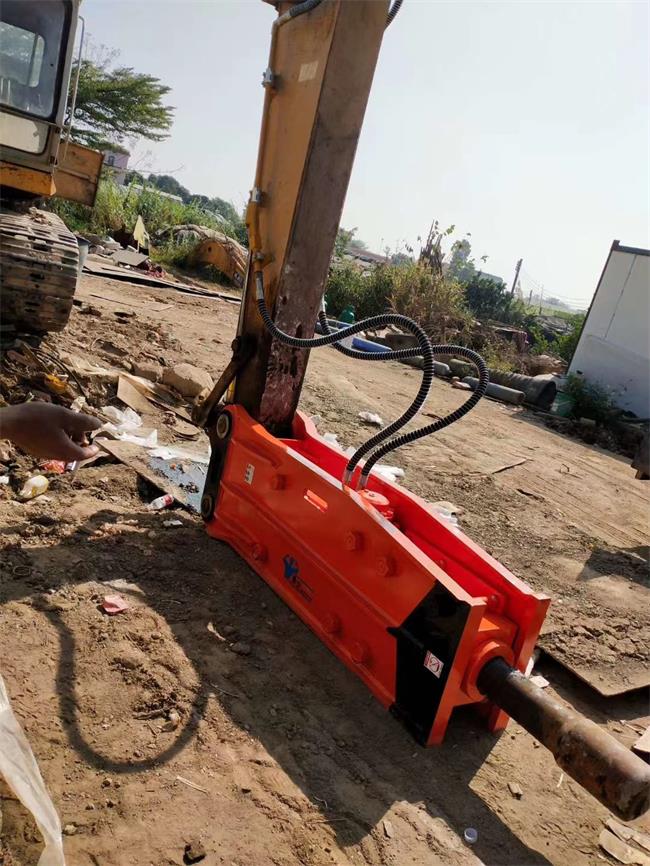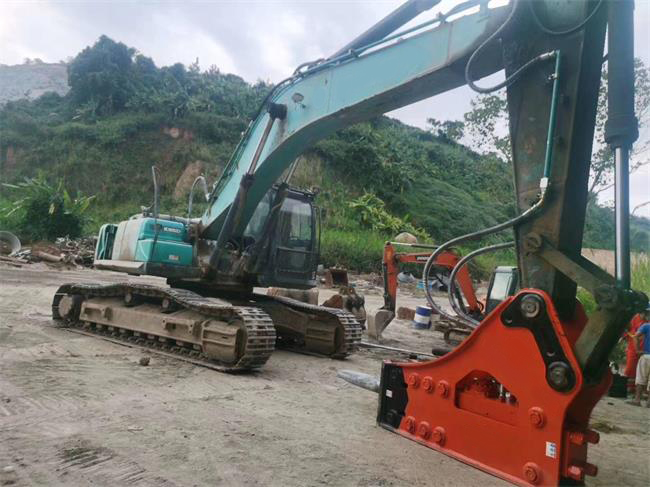 HuiTong
HuiTong  2025-06-13
2025-06-13
Since the advent of hydraulic breaker, the technology has been improved day by day. Compared with pneumatic hammers, hydraulic breaker have the advantages of low noise, good crushing performance, high energy utilization, and compact body. It can be directly installed on general self-propelled hydraulic machinery, and it has no self-contained power device. It can be used more and more widely in the fields of demolishing old buildings, broken roads, and ore.
Excavator is the main engine with the most hydraulic breaker installed. With the increase in demolition and crushing operations, hydraulic breaker are equipped on excavators, and there is an increasing demand for multiple uses of one machine.

Reasonable matching of hydraulic breaker and excavator
Reasonable matching of the hydraulic hammer and the excavator can make the hydraulic hammer more efficient and ensure the service life of the hydraulic hammer and the excavator. Under normal circumstances, it is mainly considered from the working weight of the main engine, and the output flow and pressure of the backup valve installed with the hydraulic breaker.
01Matching of hydraulic breaker and excavator's working weight and working device
You can quickly determine whether the hydraulic breaker matches the excavator through the following relationship:
In the formula, R---maximum crushing radius, S---half of the wheel track of the excavator, Wb-- working weight of the hydraulic hammer, We--- working weight of the excavator, if the ratio calculated by the above formula is less than 0.3, It means that if the hydraulic hammer is selected to be small, it will cause the hydraulic hammer to be damaged quickly; if the ratio is greater than 0.5, the hydraulic hammer is selected to be large.
In addition, consider whether the radial and axial fit clearance between the pin shaft and the pin hole connecting the hydraulic hammer and the working device is appropriate.

02 Matching of working flow and pressure
Like other hydraulic components, each hydraulic breaker has its rated working pressure in the required flow range. When the hydraulic hammer is selected, the flow requirement of the hydraulic hammer must be consistent with the output flow of the spare valve of the excavator. Generally speaking, the flow rate determines the working efficiency of the hydraulic hammer, that is, the number of impacts per minute. The flow rate is proportional to the number of impacts. However, the flow rate is greater than the required flow rate of the hydraulic breaker, which will cause the hydraulic system to generate excessive heat and cause the system Excessive temperature rise reduces the service life of components.
In the selection of hydraulic hammer, the working pressure of the hydraulic hammer must match the limit pressure of the spare valve. If it does not match, it should be adjusted according to the rated pressure of the hydraulic hammer within the adjustment range of the spare valve.